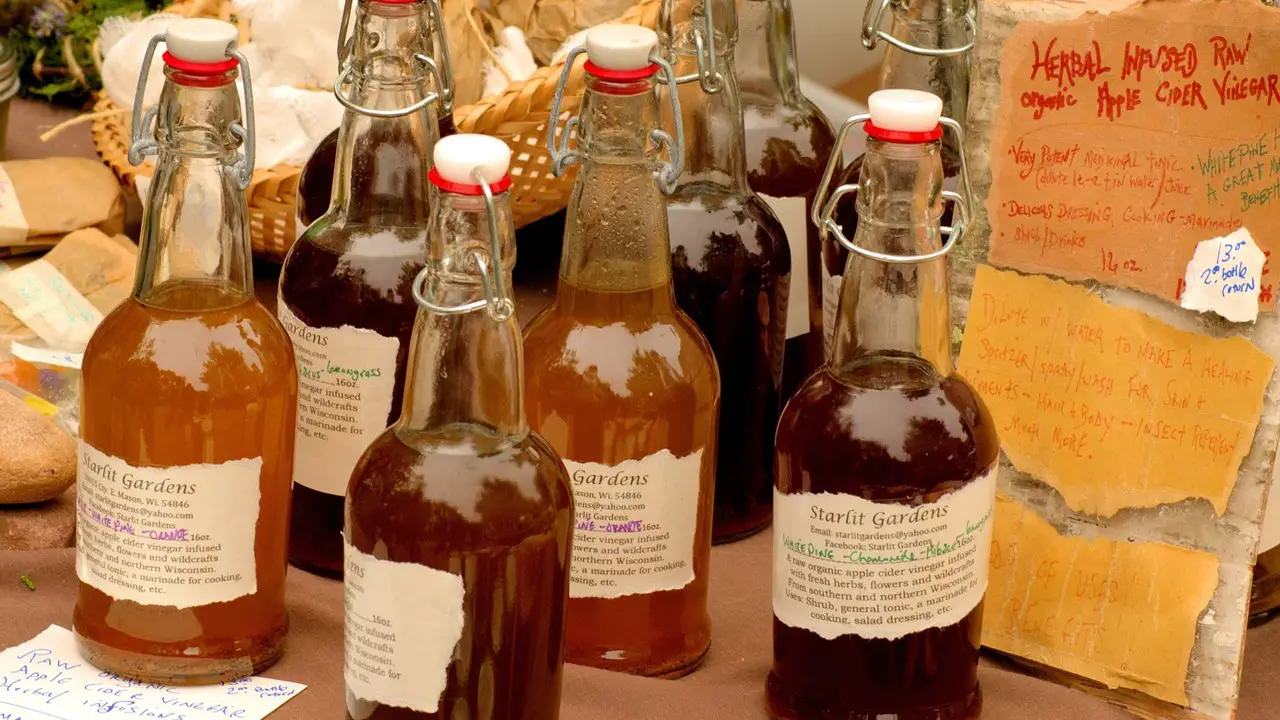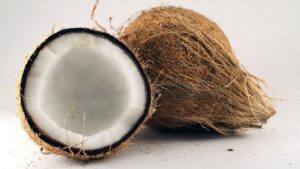Vinegar, an acidic liquid, is responsible for the edgy tanginess and sourness that you love in a variety of your favourite Chinese delicacies.
Vinegar is a flavouring agent in your favourite noodles. Depending on the source, vinegar is of different types such as, white vinegar (the most common type in Indian kitchens), rice vinegar, apple cider vinegar, coconut vinegar, Balsamic vinegar and wine vinegar.
Uses of Vinegar in Indian Cuisines

Vinegar is used for marinating meat. If it comes to cooking, it is mostly used to cook comforting, nutritious meals.
Vinegar infuses a distinct tart flavour and balances the tastes in such a way that it minimizes use of unhealthy ingredients like butter, oil, cream and excessive sugar.
It also cuts down unsaturated fat (which is unhealthy) and helps to maintain blood cholesterol and sugar.
Vinegar is not used in everyday meals prepared in Indian households. This is a reason why most people are not aware of its health benefits.
The flavouring agent has shot to fame due to the popularity of Chinese cuisines.
How Does Vinegar Taste?
Vinegar has a sour taste and is often described as acidic or tangy.
The level of acidity can vary depending on the type of vinegar, with some being more mild and others more sharp.
In general, vinegar is not a sweet or savory taste, but rather adds a distinct tanginess to foods.
It can be used in a variety of ways in cooking, such as a flavor enhancer in dressings or marinades, as a preservative in pickling, or to add acidity to dishes like soups or sauces.
How Can Vinegar Be Made?
Vinegar can be made by a process called fermentation, which involves the conversion of ethanol (alcohol) into acetic acid by acetic acid bacteria.
The fermentation process occurs when yeast consumes the sugar in fruits, grains, or other sources, and converts it into alcohol.
Then, acetic acid bacteria convert the alcohol into acetic acid, which is the main component of vinegar.
To make vinegar at home, you will need a starter culture of vinegar that contains acetic acid bacteria.
You can use unpasteurized, unfiltered vinegar that contains “the mother”, a cloudy substance that contains the bacteria.
Alternatively, you can purchase a vinegar mother culture from a store or online.
To make vinegar, follow these steps:
- Mix equal parts of water and sugar (or another source of sugar) in a sterilized container.
- Add the starter culture of vinegar (or vinegar mother) and stir to combine.
- Cover the container with a cheesecloth or other breathable cover and store it in a warm, dark place.
- Allow the mixture to ferment for several weeks to several months, depending on the desired strength of the vinegar.
- Once the vinegar has reached the desired strength, strain out any solids and bottle the vinegar.
The type of vinegar you can make will depend on the source of sugar used.
For example, apple cider vinegar is made from apple cider, while wine vinegar is made from wine.
Different sources of sugar will produce different flavors of vinegar.
How Did Grand Mothers Make Vinegar in The Old Days?
In the prehistoric era the vinegar used to be lead acetate as the alchemists pour the vinegar into the lead to make it.
Thus, it was known as “sugar of lead,” but it is deadly to consume. In France they used to add flavours like raspberries, fennel, roses, clovers and pepper.
The transformation of the fruit juices to vinegar is done with the help of a chemical reaction of acetaldehyde turning to acetic acid.
Even fruit juices are mixed in the barrels of vinegar where the fruit juices skimmed off at the top and sours.
How Long Does Homemade Vinegar Last?
The shelf life of homemade vinegar can vary depending on several factors such as the type of vinegar, the method used to make it, the storage conditions, and the presence of any additives or preservatives.
Generally, homemade vinegar made from wine, cider, or other fruit juices can last for several months to a year if stored properly in a cool, dark place.
However, the quality of the vinegar may degrade over time, and it may become cloudy or develop a sediment at the bottom of the container.
It is important to note that homemade vinegar does not have the same level of acidity and stability as commercially produced vinegar, so it should be used with caution in food preparation to avoid any risk of spoilage or foodborne illness.
It is always recommended to use vinegar within a reasonable time frame and to discard it if it shows any signs of spoilage.
Conclusion
Vinegar is a versatile ingredient that adds a distinct tart flavor to a variety of dishes.
It can be made at home through the fermentation process using a starter culture of vinegar or vinegar mother.
Different sources of sugar can be used to create different flavors of vinegar, and it can be infused with flavors like raspberries, fennel, and pepper.
While homemade vinegar can last for several months to a year if stored properly, it is important to use it within a reasonable time frame and discard it if it shows any signs of spoilage.







